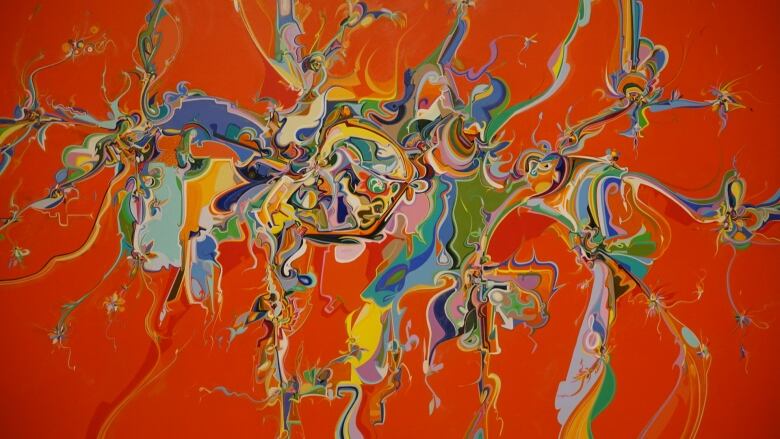What makes us love (or hate) art? An Ottawa professor has a theory
Jim Davies explores how our instincts help us distinguish between patterns and nonsense

If you are looking to give someone the gift of art this holiday, it helps to know what they like. But failing that, it may be best to follow your instincts.
Jim Davies, a professor at Carleton's Institute of Cognitive Science, has been researching why we love or hate certain works of art, and has been developing theories that it may have more to do with our evolutionary origins than the fashions of the moment.
Biological impulses
Evolution has much to do with the way we perceive realistic works of art such as landscapes, Davies told CBC's All in a Day.
In the world our predecessors lived in, "everything that looked like something probably was that something."
"If you think about the world we live in today, we see thousands more representations every single day than many of our ancestors saw in their entire lives," he said.
But our brains haven't dealt with this rapid advance in technology and media very well, he added. We haven't developed a reliable way to distinguish between representation and reality.
For this reason, we tend to gravitate toward landscapes that appeal to our most basic instincts, said Davies, who explored the connections between our instincts and our tastes in his book Riveted: The Science of Why Jokes Make Us Laugh, Movies Make Us Cry, and Religion Makes Us Feel One with the Universe.
"Studies show that people tend to like landscape pictures that represent places that would be good places to camp and live," he said. "You rarely see a painting of a big stone wall ... with a bunch of tigers around you."
The allure of patterns
Two factors at play that may also impact how strongly we react to a work of art, whether we love it or hate it, are pattern — the ability to recognize sequences in a work — and incongruity, or "something you don't quite get," he said.
While patterns trigger a sense of pleasure from the brain's opioid system, a certain amount of incongruity sparks curiosity, and a drive to find out more, he said.
Between those two opposites is a sweet spot — a mix of recognizable patterns and a little bit of mystery, and we're hooked.
"If we don't see a pattern and we also have no hope of finding a pattern, we rapidly get very bored with it," he said. "[But] if an image is too simple, our minds can put it away and not care about it anymore."

Our drive for pattern recognition is especially evident in many of the video games we play, Davies said. The body's opioid system, responsible for recognizing those pleasing patterns, is the same system that controls addictive behaviours, according to the American Academy of Neurology.
"People might play Candy Crush and they might not describe it as fun, but they might describe it as addictive," he said. "You're constantly compelled to keep going even if it's not particularly pleasurable."
Studies show that people tend to like landscape pictures that represent ... good places to camp and live.- Carleton professor Jim Davies
Art as talking point
Of course, works of art can sometimes endure in spite of our instincts.
Davies toured the National Gallery of Canada with CBC's All in a Day earlier this week, to offer some insight into why we find some pieces captivating, and others repulsive. And few pieces have attracted as much visceral antipathy as Barnett Newman's Voice of Fire.
The 1967 abstract painting currently hangs in the National Gallery of Canada. It's simple — just three vertical stripes of acrylic on canvas and two colours.
It attracted little attention until the National Gallery bought the painting in 1989 for nearly $1.8 million, sparking an uproar of monumental proportions. Above all, people asked — is it art?
"It is just a couple of stripes of paint," Davies said. "What makes it good has more to do with its context with the rest of art in society than with the intrinsic properties of the painting itself."
"Sometimes a work of art, the very nature of its controversy, can bring up philosophical ideas that make the whole thing worthwhile."